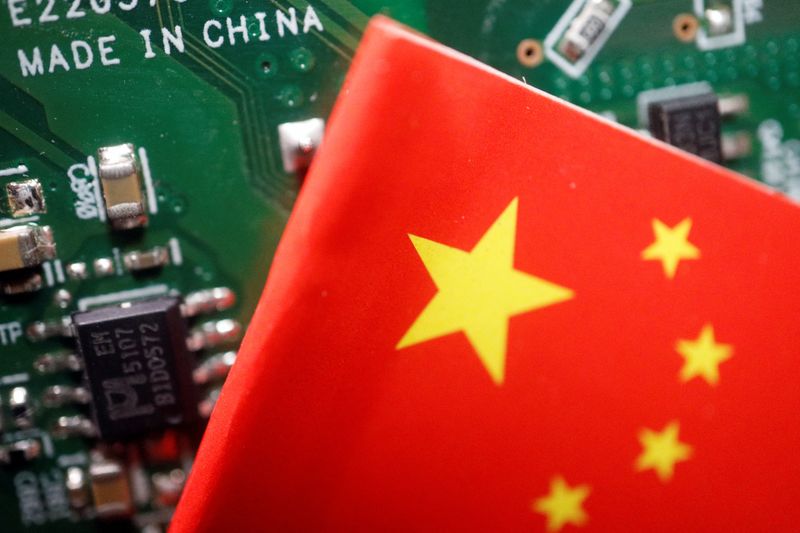Fanny Potkin and Eduardo Baptista.
SINGAPORE/BEIJING (Reuters) – Two Chinese chipmakers are in the early stages of developing high-bandwidth memory (HBM) semiconductors used in artificial intelligence chipsets, according to sources and documents.
The development in HBM – even if only in an older version of HBM – represents a significant development in China's efforts to reduce its dependence on foreign suppliers amid tensions with Washington that have led Chinese firms to buy advanced chipsets. There are restrictions on US exports.
CXMT, China's top maker of DRAM chips, has developed prototype HBM chips in partnership with chip packaging and testing company Tongfu Microelectronics, according to three people briefed on the matter. Two of them said the chips were being shown to clients.
In another example, Wuhan Xinxin is building a factory capable of producing 3,000 12-inch HBM wafers a month with construction scheduled to begin in February this year, documents from corporate database Qichacha show.
CXMT and other Chinese chip firms are also holding regular meetings with South Korean and Japanese semiconductor equipment firms to buy equipment to produce HBM, the two people said.
The sources were not authorized to discuss the matter and declined to be identified. Hefei-based CXMT or ChangXin Memory Technologies and Tongfu Microelectronics did not respond to requests for comment.
Wuhan Xinxin, which has flagged to regulators that it is interested in going public, and its parent company did not respond to requests for comment. The parent company is also the parent of NAND memory specialist YMTC or Yangtze Memory Technologies. YMTC said it does not have the capacity to mass-produce HBM.
CXMT and Wuhan Xinxin are both private companies that have received local government funding to advance the technologies as China invests in developing its chip sector.
Wuhan's local government also did not respond to requests for comment.
Separately, Chinese tech behemoth Huawei — which the U.S. has deemed a national security threat and is subject to sanctions — aims to produce HBM2 chips in partnership with other domestic companies by 2026, according to one of the sources and a separate report. matter to the person.
Fujian Jinhua Integrated Circuit, a memory chip maker among a Huawei-led group of companies planning to build HBM, is also under US sanctions, The Information reported in April.
Huawei, which has seen demand for its Ascend AI chips soar, declined to comment. It is not clear where Huawei gets HBM from. Fujian Jinhua did not respond to a request for comment.
Long journey ahead
HBM – a type of DRAM standard first developed in 2013 in which chips are stacked vertically to save space and reduce power consumption – can store large amounts of data generated by complex AI applications. Ideal for processing quantities and has grown in demand amid the AI boom.
The market for HBM is dominated by South Korea's SK Hynix – the sole supplier of HBM to AI chip giant Nvidia – as well as Samsung, and to a lesser extent US firm Micron Technology, according to analysts. All three manufacture the latest standard – HBM3 chips – and are working to bring the fifth-generation HBM or HMB3E to consumers this year.
China's efforts are currently focused on HBM2, according to two sources and a separate person with direct knowledge of the matter.
The U.S. has not imposed export restrictions on HBM chips, but HBM3 chips are made using U.S. technology that many Chinese firms, including Huawei, have been barred from accessing as part of the ban.
Nori Chiu, director of investments at White Oak Capital and a former analyst who covered the IT sector, estimates that the Chinese chipmaker outpaces its global rivals in HBM by a decade.
“China faces a long way to go, as it currently lacks the competitive edge to compete with its Korean counterparts even in the realm of conventional memory markets,” he said.
“Nevertheless, (CXMT's) collaboration with Tongfu represents an important opportunity for China to advance its capabilities in both memory and advanced packaging technology in the HBM market.”
Patents filed by CXMT, Tongfu and Huawei show that plans to develop HBM locally date back at least three years after China's chip industry became increasingly the target of US export controls.
According to Anaqua's AcclaimIP database, CXMT has filed approximately 130 patents in the US, China and Taiwan for various technical issues related to the manufacture and functionality of HBM chips. Of these, 14 were published in 2022, 46 in 2023 and 69 in 2024.
A Chinese patent, published last month, shows the company is considering advanced packaging techniques such as hybrid bonding to create a more powerful HBM product. A separate filing shows that CXMT is also investing in the development of the technology needed to make HBM3.
(Reporting by Fanny Potkin in Singapore and Eduardo Baptista in Beijing; Additional reporting by Hekyung Yang and Joyce Lee in Seoul; Editing by Brenda Goh and Edwina Gibbs)
